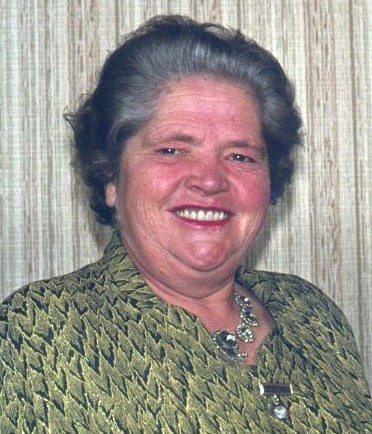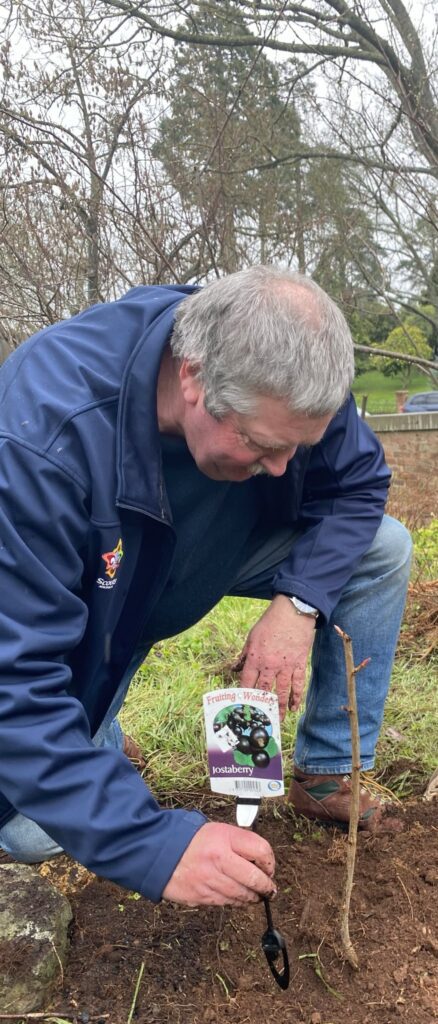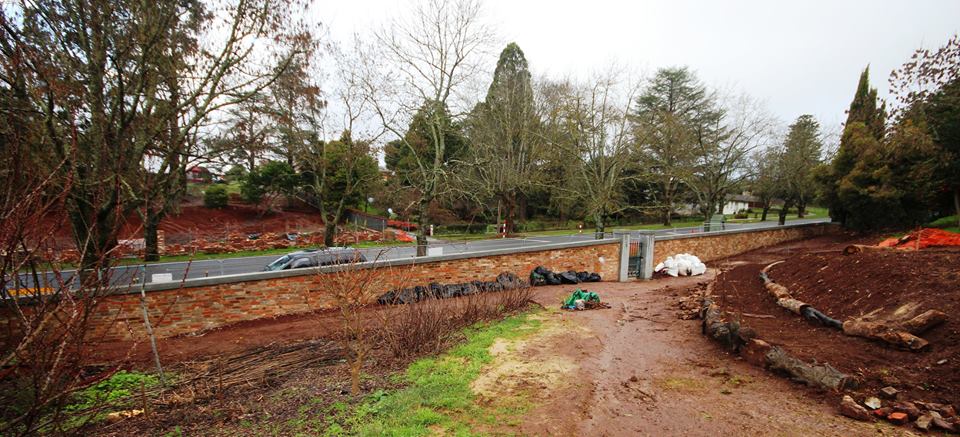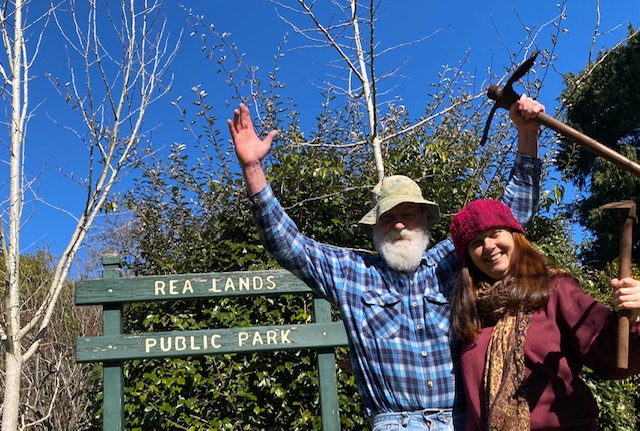
A quiet clause added to a Hepburn Shire Council motion has ignited a storm of community concern over the future of Rea Lands Reserve in Daylesford.
At Council’s July meeting, a motion was passed that seven properties were considered surplus to requirements and that the process to dispose of the properties should be initiated. The process requires a period of community consultation.
But an amendment to the motion requested a report on the history of the reserve at 42 Raglan Street – land bequeathed to Council in 1982 by former mayor, nurse and community leader Betty Rea – and whether it might be considered for “sale or other use.” The prospect that the land could be sold as part of Council’s efforts to address its severe financial difficulties has prompted strong reactions on social media and spurred community action.
A community gathering
On 12 August, what began as a small and hastily planned meeting by Betty Rea’s son, Stefan quickly became a public event organised by Robert Burrowes, Anita McKone, Debora Semple, Heather Mutimer and Patrick Jones. Despite the cold and drizzly weather, 43 people, including Cr Tim Drylie, gathered at Rea Lands Reserve to hear speakers, share memories, and launch a campaign to keep the land in public hands.

Stefan Rea, a son of Betty, who describes himself as a “fifth-generation Daylesfordian,” recalled his family’s 150-year history in the town and spoke about his mother’s life and values. He explained that Betty’s will made clear her wish that the land, once part of the Rea family property on the north side of Wombat Hill, be given to Council for use as a community park.
Two long-term residents, Kath Callahan and Val Shea, who had children delivered at Daylesford Hospital by Betty as midwife, were among those present. Their attendance underscored the deep local connections of the Rea family and the enduring memory of Betty’s service as nurse, mayor and community figure.
Patrick Jones spoke about the Daylesford Community Food Gardeners’ stewardship of the park since 2011, while Anita McKone, who has been core caretaker since 2013, led a tour of the garden.
The event ended with a ceremonial planting of jostaberries and redcurrants to create a new “edible hedge”. Stefan Rea planted the first bush, joined by other participants who contributed to the living symbol of community commitment. The gathering was recorded on video for posterity, and organisers plan another, larger event in coming weeks.
Fourteen Years of Community Care
While many in Daylesford know Rea Lands as a tranquil public park with winding paths, fruit trees, and shaded nooks, its current form is the result of more than a decade of community effort.
When the Daylesford Community Food Gardeners (DCFG) first became involved in 2011, the reserve was still largely an open grassed area with a few large trees and a picnic table. Over the years, DCFG members, led by McKone and Burrowes, have poured thousands of hours of voluntary labour and personal contributions into its transformation.
Council has also supported the reserve, most significantly funding the $70,000 restoration of the heritage brick wall in 2015. That project gave the gardeners an opportunity to build a sandstone-lined swale to slow water run-off and protect the repaired wall, while improving soil moisture for plantings.

The garden now boasts more than 50 additional trees, hedges, bushes, flowers, and a small vegetable patch. Two avocado trees planted in 2015 are just reaching fruiting capacity, and a young Bunya pine, significant to many First Nations peoples, is growing tall beside the older Norfolk and fir pines.
The reserve’s character reflects its role as both a food garden and public park. Its slightly “wild” appearance at times is a deliberate choice, encouraging biodiversity and creating a space that feels relaxed and inviting. Visitors – both locals and tourists – stroll the paths, share gardening knowledge, picnic, walk dogs, and celebrate birthdays. Children in particular treat the garden as a “secret” place for exploration and play.
A Shared Legacy
Support for the reserve extends beyond the gardeners. Adjacent neighbours have provided materials, plants and practical assistance, while local experts such as permaculture co-founder David Holmgren and biodynamic orchardist Ian Clarke (before his death in 2019) have lent advice and skills.
McKone describes Rea Lands as an integral part of Daylesford’s identity: “I see Rea Lands as a significant and successful addition to the mosaic of Daylesford gardens, that also has key environmental, food sustainability and health aspects as well as heritage and legacy value. It deserves to be retained in public hands for the ongoing benefit of the community as a whole.”
Council has not yet proposed to sell Rea Lands, but its inclusion in the July amendment has heightened fears among residents. For many, the reserve is more than just open space – it is a living memorial to Betty Rea’s generosity and vision, and a thriving example of community-led stewardship.
The campaign to safeguard the reserve is only just beginning, but if the gathering at Rea Lands is any indication, the park has no shortage of champions.





